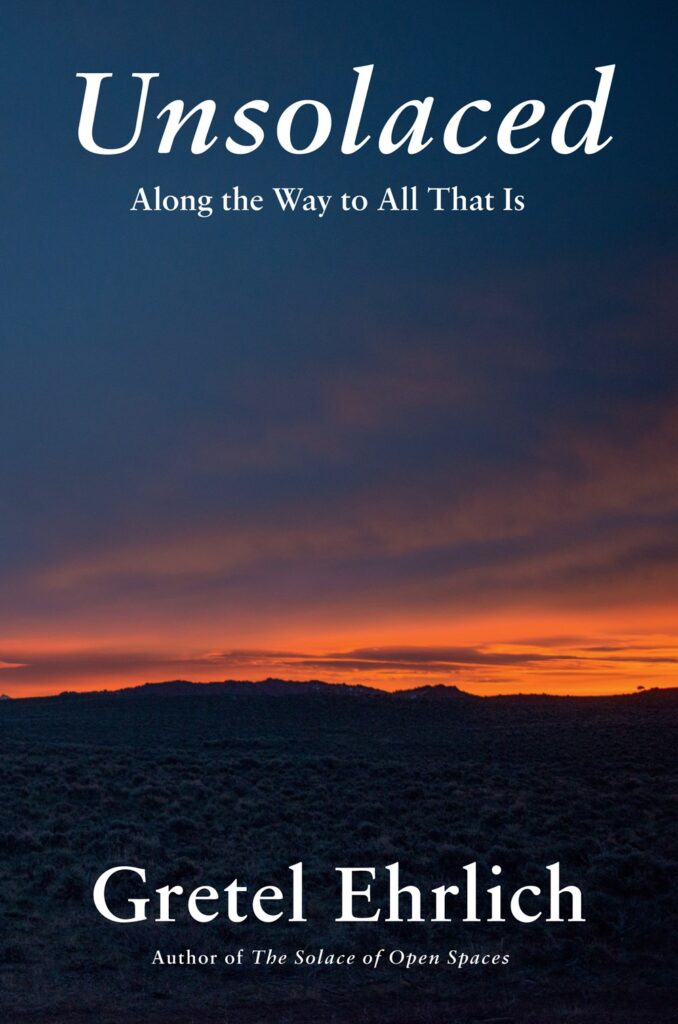
My latest review is of an elegiac memoir of by an extraordinary woman about living in solitude in the wildest places, and watching them disappear. At the Chicago Review of Books.
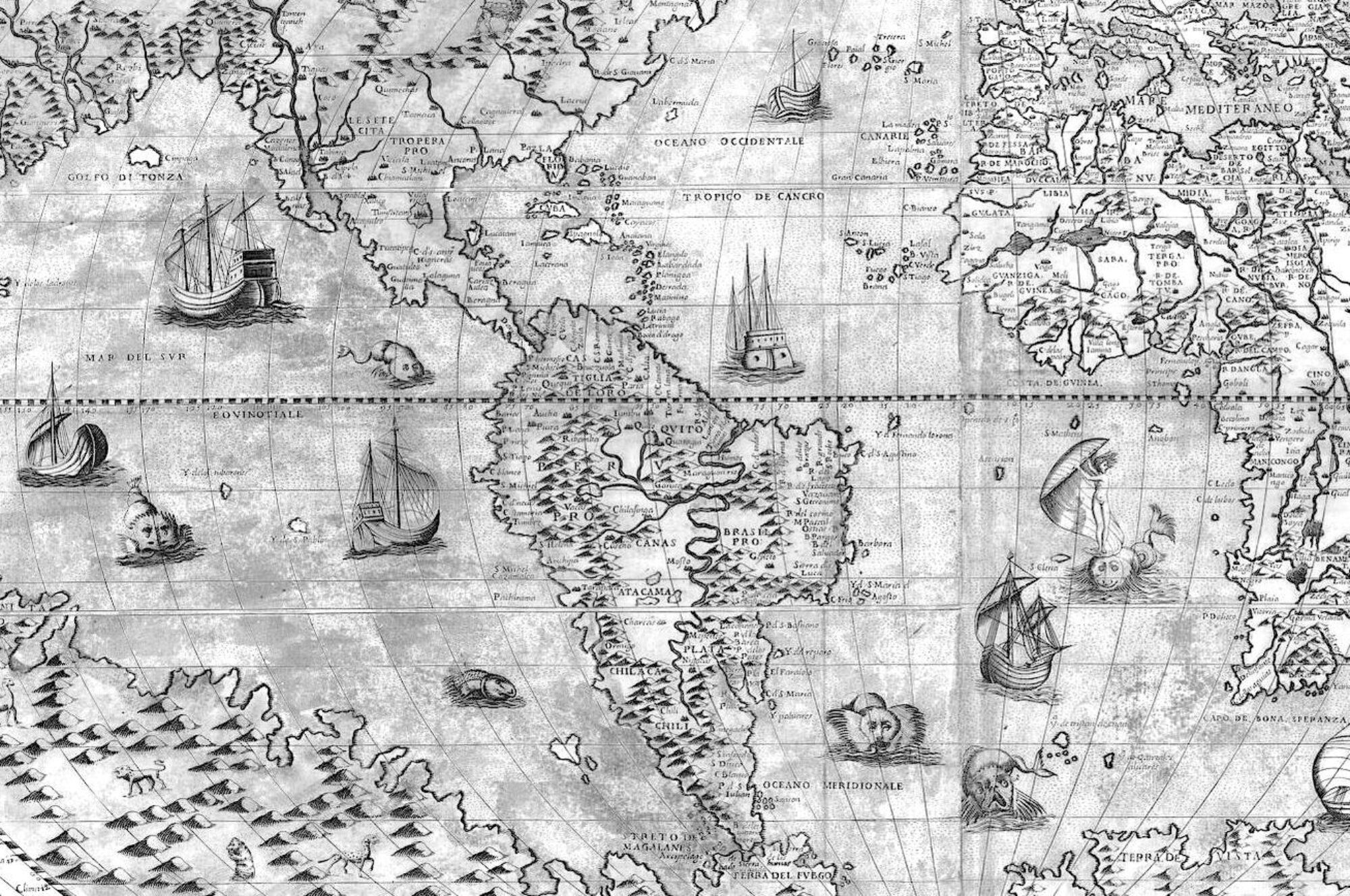
Writer, editor, translator

My latest review is of an elegiac memoir of by an extraordinary woman about living in solitude in the wildest places, and watching them disappear. At the Chicago Review of Books.
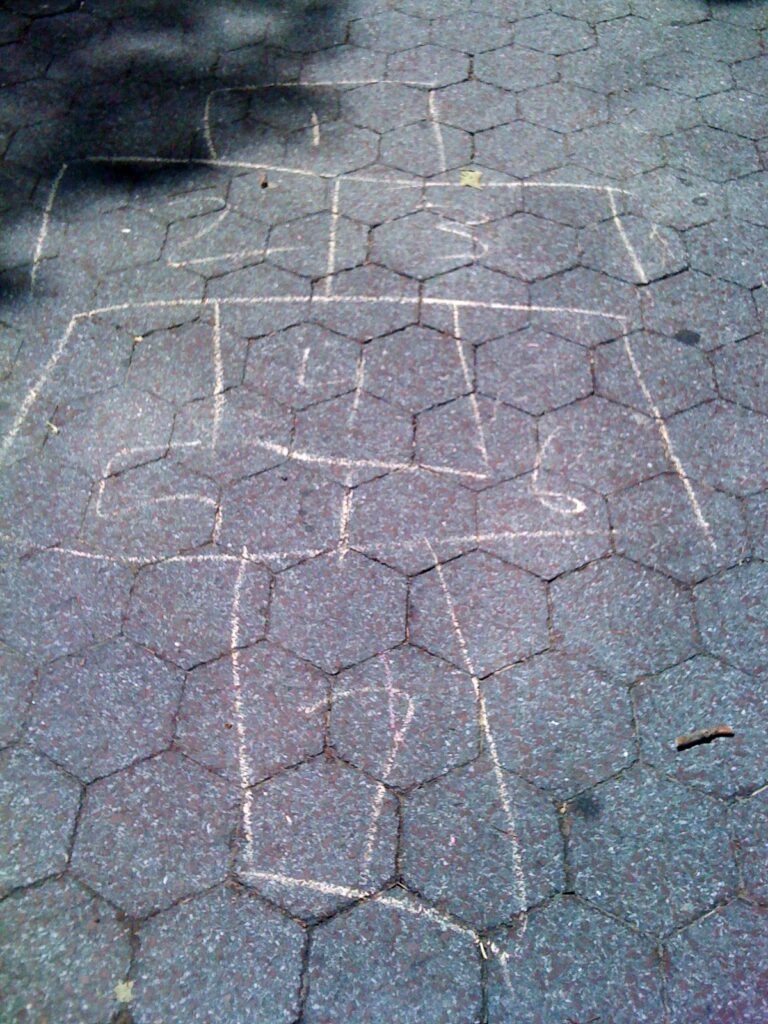
For my book opinions and fledgling comics, subscribe to my always free newsletter, How to Play Hopscotch. You can also read archives there.
Sign up at megin.substack.com.
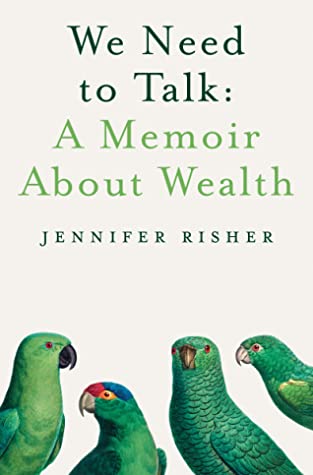
My latest review for the Chicago Review of Books, of a memoir by a tech multi-multi-millionaire on grappling with her own wealth. My nominee for the “Lady, Read the Room!” Award for 2020. Check it out here.
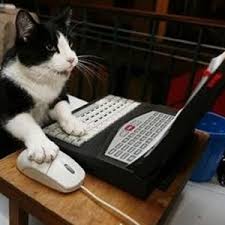 My round-up of “last year’s books” is coming a bit late as I’ve turned this annual tradition into quite the project, and I was busy writing book reviews. I decided to go ahead and finish it, as I mostly post this for my reader friends, and it doesn’t really matter when I get it up.
My round-up of “last year’s books” is coming a bit late as I’ve turned this annual tradition into quite the project, and I was busy writing book reviews. I decided to go ahead and finish it, as I mostly post this for my reader friends, and it doesn’t really matter when I get it up.
I love seeing other people’s book lists, friends and strangers alike, and I’m always so curious to see what someone is reading (on the bus, on their shelves). I started this annual round-up because I wanted to understand what I actually thought about a book, how much of it remained, and what my reading life as a whole amounted to. I decided to post it online (on a defunct anonymous book blog) so that I would complete the thought and actually finish the exercise. Then it became a way of sharing with my bookish friends scattered around the world, who I miss talking to. They’re not quite reviews, as I think a book review actual owes more to both the readers and writer (I hate summarizing plots, for example). Just a few thoughts.
As usual, the ranking is not necessarily based on literary excellence, but on how big an impact the book made on me (sparking new thoughts, feeling things, the lingering image); how likely I am to press it into a friend’s hand; how much of it remains months after reading it.
A note on book lists
Seeing all of the best of the year, best of the decade, best of the 21st century book lists at the end of 2019 wasn’t as fun as I’d anticipated. After these lists came the raft of lists most anticipated books of 2020. All of the lists started to feel like this endless, churning mass, or like a crowded conveyor belt of text that’s impossible to keep up with. Obviously this exclusive focus on what’s new is what keeps the publishing industry viable, but it must also be so disheartening for anyone who published a book 3 years ago, or 7 years ago, or 15 years, this feeling of only having a couple of months to make an impact.
I do love discovering a bold and new voice, who is speaking to our precise moment. But there should also be at least a little room in our shared cultural spaces (book coverage in newspapers, book sites like Electric Lit, etc.) to consider work beyond the months (weeks?) of its big debut… I saw some conversations around this on Twitter, with writers/critics attributing this myopic focus to the loss of dedicated book sections in newspapers, well paid book review gigs, etc. Books coverage being reduced to the “listification” of writing about brought by the internet.
It’s sad to lose some of the excitement around new book lists to this general sense of information overload I’ve been trying to keep my head above for the past few years. On the other hand, it’s less pressure to keep up, and maybe make my reading life more intentional.
On the subject of reading books other than what’s hot now, I’ve noticed that, since I began tracking my reading more closely, beginning in 2009, besides reading newish books I’m excited about, I’ve also kept up a steady parallel stream of books published by women in the 1970s. This wasn’t intentional. I think it’s partly because one writer leads me to another (e.g. Mary McCarthy led me to Elizabeth Hardwick), the fact that there’s been a revival of these writers in recent years who criminally went out of print (Renata Adler, Eve Babitz). I also think it’s because the 1970s were a time of intense, deep-thinking creative production, also in film and music. (The possible reasons why are whole other post.))
Overview
I read 33 fiction, nonfiction and poetry books. This number is higher than usual, I think in part because I broke up with The New Yorker in the spring (it’s an up-and-down relationship) and because I tried to get a grip on my social media addiction.
General trends in my reading life in 2019: Lots more nonfiction, mostly essay collections; lots more poetry read cover-to-cover rather than dipped in and out of; a decline in my reading of books in translation and books written in other languages, which I’m not happy about. I also felt a need to re-read books I’ve loved, so I’ve listed these last, as I’ve written about them at other times.
A few stats on the books I read:
1. A Life’s Work by Rachel Cusk (Faber & Faber, 2001)
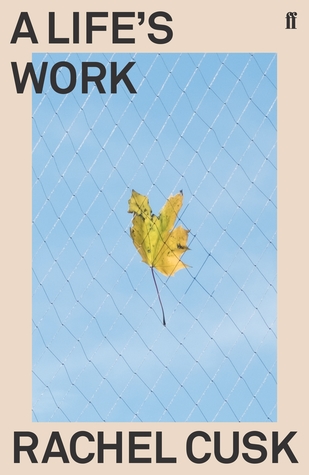
2019 was my year of Rachel Cusk, as it was I think for many people, as the conclusion to her pioneering “Faye” trilogy was published in 2018 and brought a lot of buzz. After tearing through a lot of her work, though, this memoir of becoming a mother strikes me as the most remarkable achievement. While I’m not a mother, I’ve thought a lot about parenthood over the years, and how it might change someone. (Or maybe not being a mother when most of the women in my life are is what’s made me all the more curious). How parenthood changes not only how you structure your life, how you structure your time, what you consider important, etc. which are things people usually talk about, but how it changes your sense of self – much harder to articulate—and what Cusk tackles in this memoir.
This isn’t a book exclusively for mothers, just as books about traveling around the world, or going to war, or being a chef aren’t only for readers who have done those things. I say this because it ticks me off the way the experience of motherhood is marginalized as something mainly of interest to mothers. Cusk tears down this ghettoization and the related sentimentality around motherhood and does a surgical (and hilarious) analysis of “the literature” on pregnancy and baby books. She considers the consciousness and existence of a baby on its own terms. She breaks down the complicated sense of being divided in two, a loss of a previous self, the almost-romantic obsessiveness between mother and baby… and a lot more. The world wasn’t ready for this book when it came out. Cusk was trashed as a whiner and even criticized as being a bad mother by her reviewers, and the book relegated to the “mommy war trenches,” rather than considered as a memoir of an intense human experience from a completely individual perspective, setting down thoughts and truths I don’t think have been articulated in print before.
Provenance: The American Book Center, Amsterdam
2. Eichmann in Jerusalem: A Report on the Banality of Evil by Hannah Arendt (Penguin Books, this edition 1977, original pub date is 1963)
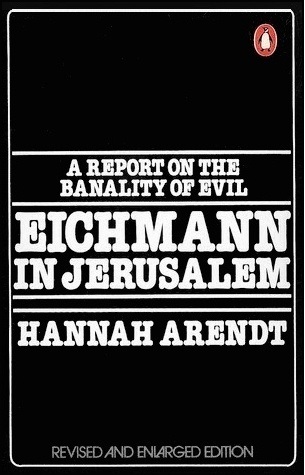
I’d heard a lot about Arendt’s work (and her name has become current again with the election of Trump), but was frankly intimidated as I don’t feel like my mind is capable of taking in anything labeled philosophy these days. I learned that this book was based on a series of controversial New Yorker articles published in the 60s from a 2012 German film called Hannah Arendt (recommended!), so I overcame my fear, thinking of this book as a very long New Yorker article.
I could write a whole essay about what I took away from this book. The short version in list form: as promised by the title, an analysis of the psychology and bureaucracy behind obedience to horrific crimes against humanity; an absolutely unwavering moral clarity, intent on seeing clearly through sentimentality and politics (she isn’t afraid to criticize the effect of these on the court proceedings for example, or to speak openly of the political motivations of Israel and Germany in the trial); the concise account of the “Final Solution” treated by country, a tremendous synthesis done in under 100 pages, revealing the sort of resistance that worked against the Nazis (in Scandinavia, for example), perceived as inexorable in other places; her style, which is acerbic, unflinching, erudite, confident.
It was Arendt’s tone that essentially what got her into trouble. Critics understandably were bothered by her being able to find anything funny about the situation, but I think this acerbic tone is a sign of her courage. Arendt demands truthfulness in language, and she refuses to hide behind platitudes. Cries of “Never Again” were already stale at the time she wrote this book (early 1960s), as the impunity so many of the perpetrators were granted in Germany and elsewhere was obvious. Sentiment and good intentions aren’t enough, only an international criminal court could serve as potential deterrent and retribution for these acts. (An institution that came to be! And for which I worked for 3 years!) It’s her faith in and respect in the power of language that allows her to see the humor in Eichmann’s use and abuse of language, his utter reliance on clichés and platitudes, especially about the worst acts committed by the Third Reich.
I used to define life difficulties as challenges to writing (or creative production, generally), but lately a different path has been apparent, writing as a way through them, although this is very, very hard, to plunge into the material. But maybe it’s a way out. This thought comes from contemplating the lives of amazing writers, who survived terrible things, but wrote through them. Writing as a way of surviving. I’m thinking of Natalia Ginzburg, who survived WWII through much hardship, including losing her beloved husband (who died imprisoned by the Fascists) and other family members; Marguerite Duras, who survived childhood with a mentally ill mother, lost a child, battled alcoholism, but wrote and made films through all of it. Arendt was a Jewish German woman who, though she fled the country before the worst was to come, but still bore witness to so much horror. To write something so clear, uncompromising (and even at times bemused), finding a way through the emotional, political, historical complications of the Holocaust (when it’s easier and understandable to retreat, to be too tired to pick up the pen) is an incredible act of strength and courage.
Origin: Boekenzolder (free book warehouse in Leiden!)
3. Outline by Rachel Cusk (Faber & Faber, 2014)
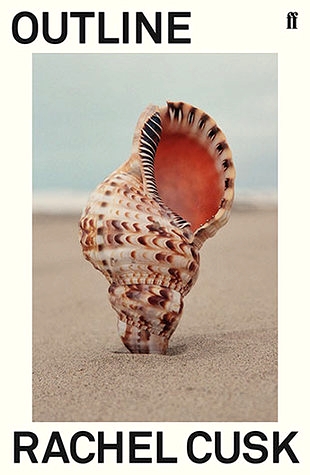
This is the first in Cusk’s so-called Faye trilogy. I loved:
– How this novel was formally experimental but still absolutely emotionally piercing. (Not much happens, it’s mostly made up of the narrator, a British writer teaching a workshop in Athens, retelling stories other people tell her.)
– How it gives you the dislocated feeling of travel, where your senses are heightened and the smallest details (a poster in a cafe) take on some yet-unknown significance.
– How Faye has a weary, post-traumatic tone, but still manages to throw shade (on the obnoxious and Irish writer, a fellow teacher, for example).
– How much it gets accomplished in 150 pages or so.
I wrote a lot more about this trilogy here.
Provenance: The American Book Center, The Hague
4. Sleepless Nights by Elizabeth Hardwick (Virago Press, 1979)
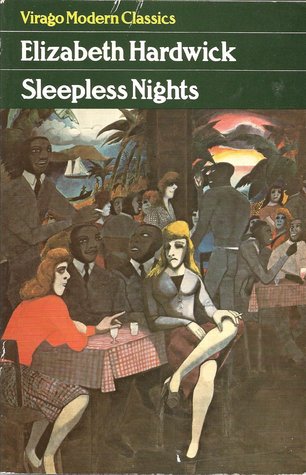
A stunning polished gem of a novella. I got something akin to Stendhal syndrome from the first chapter of this book, which sounds dramatic, but is true. I felt physically overwhelmed by how good it was at the language level, and felt something like panic that I was incapable of taking it all in at once. I read the Paris Review interview with Hardwick after reading this, and she talks about how much of her process (and her favorite part of the writing process) is revision and polishing, which gave me a better sense of how writing of this intensity and caliber is possible.
A difficult read, not because of the plotlessness, which doesn’t tend to bother me, but the relentless grimness of the episodes within. A work about the autumn of life, memory, regret, getting old. I had more to say about it here.
Superficial side note: New York Review Books, the press I’m crushing hardest on lately, recently reissued this (along with much of Hardwick’s other work) with a much better cover in their beautiful editions.
Provenance: Boekenzolder (free book warehouse in Leiden!)
5. Ways of Seeing by John Berger (Penguin, 1972)
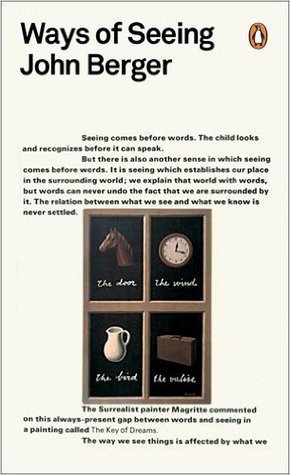
Have I mentioned I love concision? This is like a manifesto in that it’s slim and small, but you could start a revolution based on the ideas contained within, the questions it asks. For example: what was the social function of European painting? Why is the average person alienated from this direct line to our past? Why so many naked women? How do you look at a painting and how are you “supposed to” look at a painting? By art historian and novelist John Berger (oh just realized I have to put so many of his other books on my to-read, given the impact and brilliance of this one.)
This book is based on a BBC series produced in the 1970s, a little pocket paperback with black-and-white photos. A larger edition with full-color reproductions is desperately needed, given the content. Get on this, Penguin!
Provenance: Ordered from Better World Books
6. Transit and 7. Kudos by Rachel Cusk (Faber & Faber, 2016 and 2018)
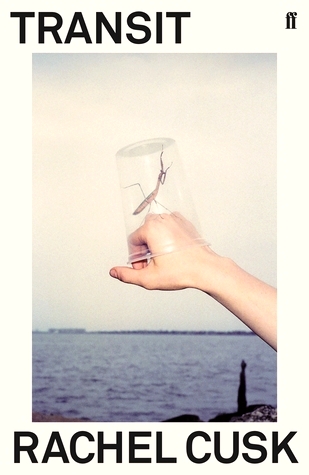
Books two and three in Cusk’s brilliant trilogy. I’ve placed them together as I read the around the same time and they’re not entirely distinct in my mind. Transit gets us closer to Faye in her home territory of London, while in Kudos she’s on the road again, at a couple of book festivals, with much to subtly say about the publishing industry, other writers, etc.
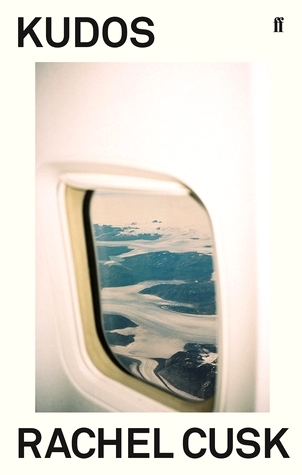
Nearly a year on from reading them (and thinking of them in the midst of the global pandemic and economic crisis) I do wonder what’s left, they seemed so of the time, and now we are clearly in a new era… I think a lot of the thrill and satisfaction comes from the writing itself – Cusk is just absolutely dazzling and gets straight to the emotion heart and complexity of any situation. I wrote more a lot more about this trilogy here.
Provenance: Probably The American Book Center in Amsterdam?
8. Peregrinos de la belleza: Viajeros por Italia y Grecia by María Belmonte (Acantilado, 2015)
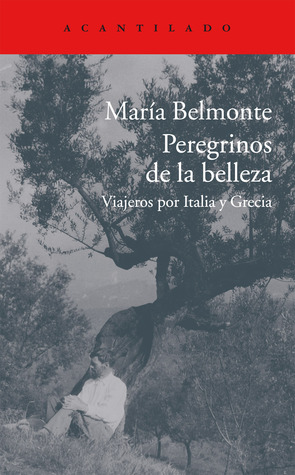
A nonfiction account of writers, artists, scientists from Northern Europe who found their true home in Italy and Greece, whether because of a love for ancient art, that Mediterranean light or the allure of the perfect island. Each subject covers a different “pilgrim of beauty” (all men) and span the 18th century (beginning with the German art historian Johann Joachim Winckelmann) to 20th century (ending with writer Lawrence Durrell). Belmonte is a charming guide, clearly in love with the Mediterranean herself, and generous to her subjects (overlooking their major deficiencies as husbands or fathers, for example), focusing on their creative output and inspiration drawn time in Italy and Greece. I also get dreamy about those countries, so this was a nice escape in the winter months.
Provenance: the fantastic Panta Rhei bookshop in Madrid, which specializes in art, design and travel books.
9. Trick Mirror by Jia Tolentino (Fourth Estate, 2019)
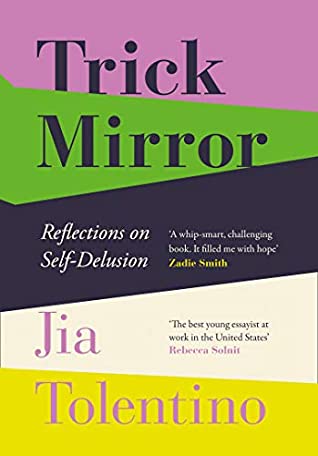
I, like many other admirers of Tolentino’s writing in the New Yorker, couldn’t wait to get my hands on this essay collection. I was absolutely blown away by the first essay, about our life on the internet, framed by her personal experiences online, which began when she was a child (Tolentino was born in 1989). I also enjoyed her piece on the “marriage-industrial complex.” Less a fan of the essays on her experiences with religion and ecstasy (the drug), and on women in fiction. If I’m allowed a quibble with the book, I think several of the pieces were long-winded and unfocused at times (I learned more than I ever wanted to know, for example, about ballet barre classes), which is maybe evidence of the value of being rigorously edited at a major publication. But a minor quibble. It’s a pleasure, actually to see a young woman writer take up this much space, embrace her success, follow her thoughts to the end and beyond, and it also shows she has room to grow, which is exciting.
Side note on the culture buzz around this: The reception and Tolentino’s perfect book tour and media blitz became a story itself because many of her essays touch on how our current incarnation of capitalism (of life lived online) ultimately exploits what’s unique and intimate about the self, with Tolentino consistently admitting her complicity and inability to escape the web, both in interviews and in the book. I think there’s a touch of envy to the criticism, because Tolentino is successful in every way – brilliant, talented, also young and beautiful, funny, self-deprecating, and also seems like she’d be fun to hang out with. You have to just give in and love her.
Provenance: American Book Center in The Hague.
10. Open Secrets by Alice Munro (Vintage, 1994)
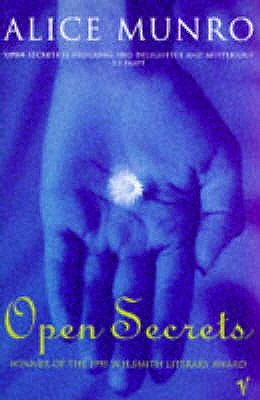
I didn’t start reading Munro until about eight years ago, and began with her most recent work (thanks to my lovely mother-in-law who introduced me to her). So it was interesting to pick up some of her earlier stories. The collection as a whole isn’t the 100% masterpiece that Hateship, Friendship, Loveship, Courtship or Like Life are, but Munro will always offer something memorable, no matter what the story. I tend to like her historical stories less than the ones set in modern times. There were a couple in this collection that really stuck with me, though, “The Albanian Virgin”, about a woman traveler kidnapped by an Albanian tribe, and “The Jack Randa Hotel”, about a woman who goes to Australia in secret in pursuit of the man who left her. (The opening of the latter story, when a plane lands and is doused with insecticide before disembarking, even made it into my dreams.)
Provenance: Boekenzolder (free book warehouse!)
11. After Henry by Joan Didion (Vintage, 1992)
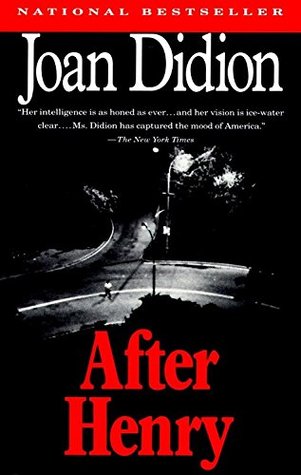
A lesser-known essay collection by Didion, published in the early 90s. Maybe forgotten because it’s frontloaded with topical essays full of names most wouldn’t recognize now (e.g. Reagan’s former chief of staff) and insider-baseball observations about the political class. But it has a couple of stunners that make this worth owning: a profile of Patti Hearst, and a magisterial, long piece about the Central Park Five, which turns into a portrait of New York City in the 80s, the hierarchies, the media, the governance, the collective self-delusions shared by city dwellers. A real model for the form.
Provenance: Boekenzolder (free book warehouse)
12 . Coventry by Rachel Cusk (Faber & Faber, 2019)
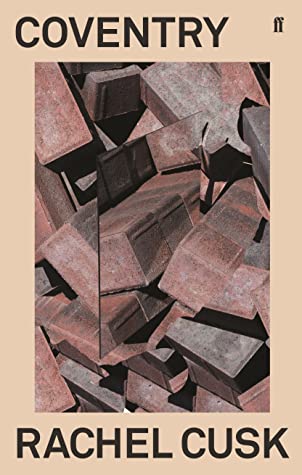
This is a collection of Cusk’s essays previously published in various places, so not a cohesive work, which I was disappointed to discover. Still, she’s incredible on just about any subject, including art – Louise Bourgeois, for example. The essay on her teenage daughters, called “Lions on Leashes” is also wonderful. I guess this book is a bit further down my list because a few of the opening pieces struck me as absurdly cranky – one about traffic in her small town in the countryside (or maybe I’m the cranky one – I have no interest in reading about driving as a metaphor). That being said, Cusk has set the bar ridiculously high, so one can’t really justifiably be critical about any of her work.
Provenance: The American Book Center in Amsterdam
13. Dreaming of Ramadi in Detroit by Aisha Sabatini Sloan (1913 Press, 2017)
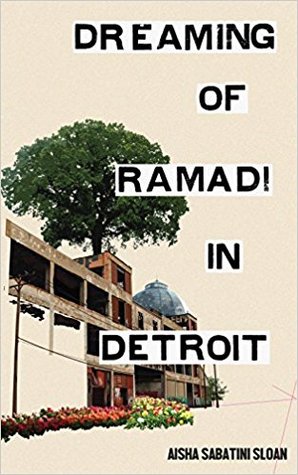
This book made me realize that an essay collection is a bit like a short story collection: the author is trying out different techniques and ways in, the essays will vary in length and topic, some will be more successful than others, and there are ones you’ll like more than others. This collection had many “braided” essays – ones that weave in often seemingly disparate topics (growing up African American in L.A., the art of David Hockney, and Rodney King). She covers a lot of ground in this book: her white cousin’s experience as a cop in Detroit, the art of Basquiat, Buddhist meditation, Beyonce’s Lemonade, body memory, especially as an African American (a history of bodies subject to violence), the 2016 election … My favorite was an essay as list form about Sabatini Sloan’s father, renowned photographer Lester Sloan, which successfully employs the second person. I like her voice best when she’s ironic, funny, personal.
Provenance: Ordered direct from the publisher (my lovely publisher), 1913 Press.
14. Sabrina by Nick Drnaso (Drawn & Quarterly, 2018)
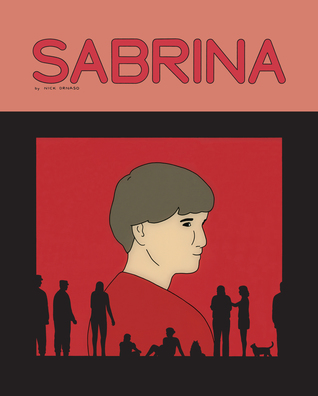
I got interested in this book when it became the first graphic novel ever to be nominated for the Booker Prize. The sound bite attached was that it’s the first book to successfully convey the Trump era. I’m not sure about that claim, but I do agree that it conveys people in places in America you don’t often see represented in fiction. The art is surprisingly simple, dull at times, even, which I think critics of the book objected to. But I think this is a conscious choice, a way to contain the grief, paranoia, disconnection of the characters. The worst events happen “off screen,” which I think places the moral responsibility, the weight of reaction on the reader… Still thinking about this one. I think I need to read it again.
Provenance: Ordered from the local comics store.
I am not so systematic about poetry, either reading or writing about it. But I don’t want to exclude poetry from my list, so below a few highlights from last year in no particular order.
Exciting discovery of the year:
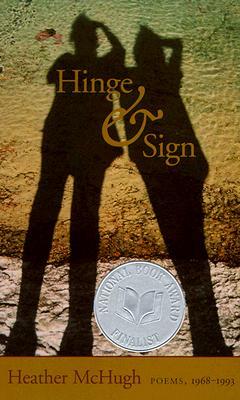
Hinge & Sign: Poems, 1968-1993 by Heather McHugh (Wesleyan University Press, 1994)
My first encounter with McHugh. I immediately connected with this book of her selected work, which is such a rare and amazing thing with a book of poems. Here are a bunch at the Poetry Foundation site.
Origin: Bruised Apple Bookstore in Peekskill, NY, an old school huge used book and record store in a cozy spot.
On the mysteries of the feminine:
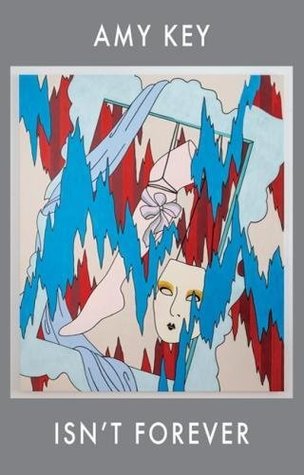
Isn’t Forever by Amy Key (Bloodaxe Books, 2018)
Playful and varied with form. Unapologetically feminine, melancholy, charming, lush poems by young British poet Amy Key. Read a few here.
Origin: Lent to me by my poet friend Lydia Unsworth (thank you, Lydia!), and then I purchased a copy of my own directly from Amy via Twitter!
For comforting long poems:

Like That by Matthew Yeager (Forklift Books, 2016)
I was missing my friend Matt, and reading his book again was a nice substitute for hanging out. These are funny, American, soulful, exuberant, ambitious. Poems by Matt here.
Origin: Gift from the poet.
Short & dark poems:
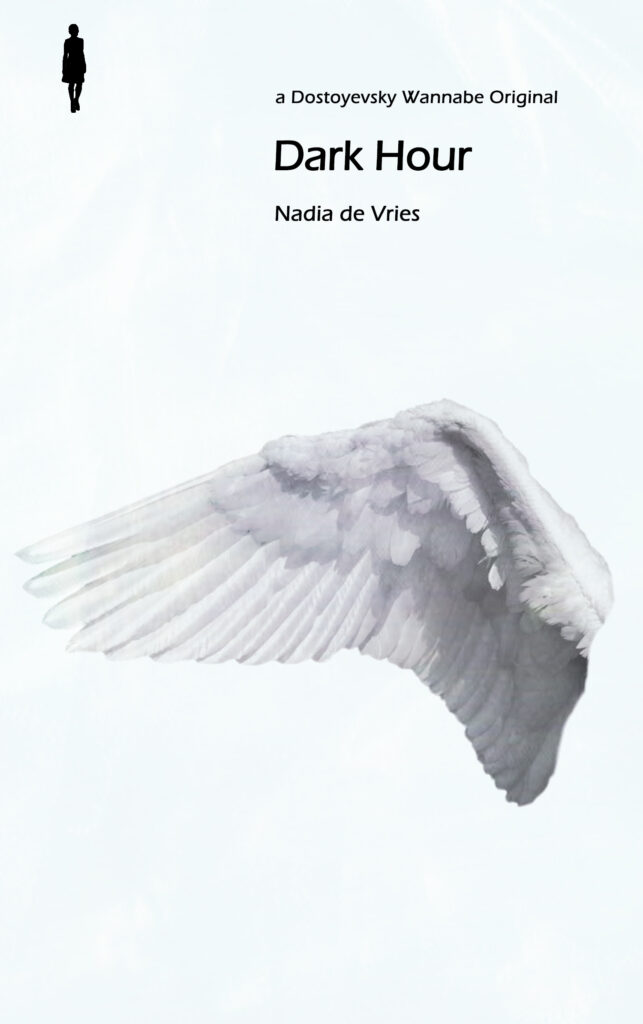
Dark Hour by Nadia de Vries (Dostoyevsky Wannabe, 2018)
Poems like a shot of espresso. Epigrammatic & ironic. Published by an enterprising UK-based press.
Origin: A swap with the lovely Amsterdam-based author.
Unexpected tropical, cheeky haikus:
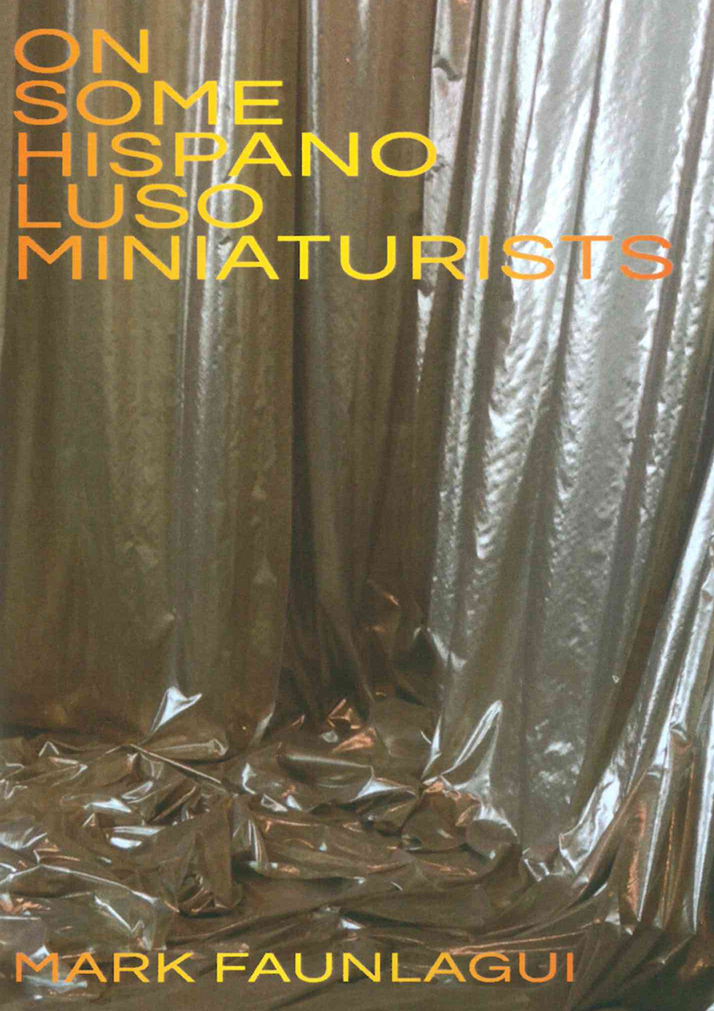
On Some HispanoLuso Miniaturists by Mark Faunlagui (1913 Press, 2018)
Aware of sensual pleasures – food, sexual attraction, the new sensations of travel – but understated.
Origin: A gift from my generous publisher, 1913 Press.
Language equivalent of a spiritual retreat:
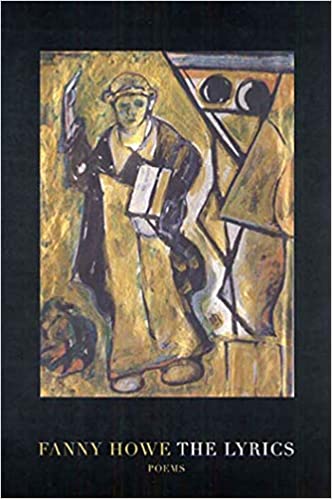
The Lyrics by Fanny Howe (Graywolf Press, 2011)
With some undivided attention, Fanny Howe’s poems will deliver you to a contemplative state. She is a pilgrim, wanderer, seer.
Origin: Purchased somewhere in NYC many years ago.
Chapbooks/Pamphlets
It took me this long to learn that the Brits call chapbooks “pamphlets,” which sounds a bit flimsy to my ears (I think of a pamphlet on preventing STDs), but who knows, maybe in a few years it will be rolling of my tongue like “queue” for line and “lift” for elevator do know, to my embarrassment…
These were all chapbooks that came in to my orbit last year, all by poet friends residing in the Netherlands:
Say cucumber by Lucia Dove (Broken Sleep Books)
I Have Not Led a Serious Life by Lydia Unsworth (above/ground press)
Grief Is the Only Thing That Flies by Laura Wetherington (Bateau Press)
I was chatting with two women a a literary event this spring. They were both in their 50s, full of knowledge, and talking about their experiences with Stendhal syndrome, based on Stendhal’s experience when visiting Florence. It’s a (medically debated) condition of being physically overcome by a piece of art to the point of being dizzy, overwhelmed, weeping. (From Wikipedia: “The staff at Florence’s Santa Maria Nuova hospital are accustomed to tourists suffering from dizzy spells or disorientation after viewing the statue of David, the artworks of the Uffizi Gallery, and other historic relics of the Tuscan city.[1]“) One of the women said it had happened to her twice in her life, once seeing the opera made of Toni Morrison’s Beloved, and the second time on seeing a Rothko painting, from across the room. The other woman had also experienced it with a painting. They turned expectantly to me, and I, embarrassed said that I hadn’t ever experienced it. But I thought it was better than lying about having experienced such a thing. I’d been dazzled by art, had a physical response to it, but never a kind of reaction they described.
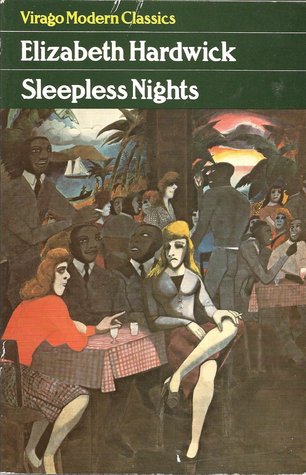
Since then, I do think I experienced something like Stendhal syndrome reading the first 20 pages or so of Sleepless Nights. I didn’t break down weeping, but I felt dizzy, overcome, a little panicked as I moved from sentence to sentence. I couldn’t take the precision, the power of each one, the turns, the unexpected rightness of each image. I was anxious about not being able to take it all in, that I was unworthy or would need to read it a dozen times to take it in. It sounds so dramatic when I set it down like this, and I can’t say that it was pleasant, but the bottom line is that the writing is stunning.
However, I haven’t put this slim novel at the top of my list of recommended books because it is so melancholic and grim. It’s about faded glory, the bill collector arriving, the loneliness of old age, the winter of life. Not the best book to read as you’re staring down 40, turning the corner.
It took me a while to understand what Hardwick was doing with this book, what it was, but I also didn’t care that it wasn’t immediately apparent, because of the deliciousness of the language. The narrator is a woman, named Elizabeth. Over the course of the book, she recalls people in her life, tracing their fates over time. Often the people are downtrodden, ill-fated: Billie Holiday in a Harlem club; residents of a New York City rooming house; a Jewish Dutch doctor who survived the Nazi camps, had life-affirming affairs in Amsterdam afterwards, in his old age, with his bitter alcoholic wife; a lover from Elizabeth’s youth, abandoned by his long-time partner, come to see her to complain, his life has amounted to not-much; the cleaning women she has known, their difficult lives, difficult ends of lives. It would be sort of unbearable if the writing weren’t so alive in contrast.
Hardwick joins the list of criminally under-appreciated women who were writing in the 60s and 70s, and who I’ve had to discover on my own. They include Renata Adler, Eve Babitz, Grace Paley… (Obviously Susan Sontag, Joan Didion, and Hannah Arendt are/were more visible, but I like that they inhabited the same world and had contact with each other at the time, even if “only” through their words.)